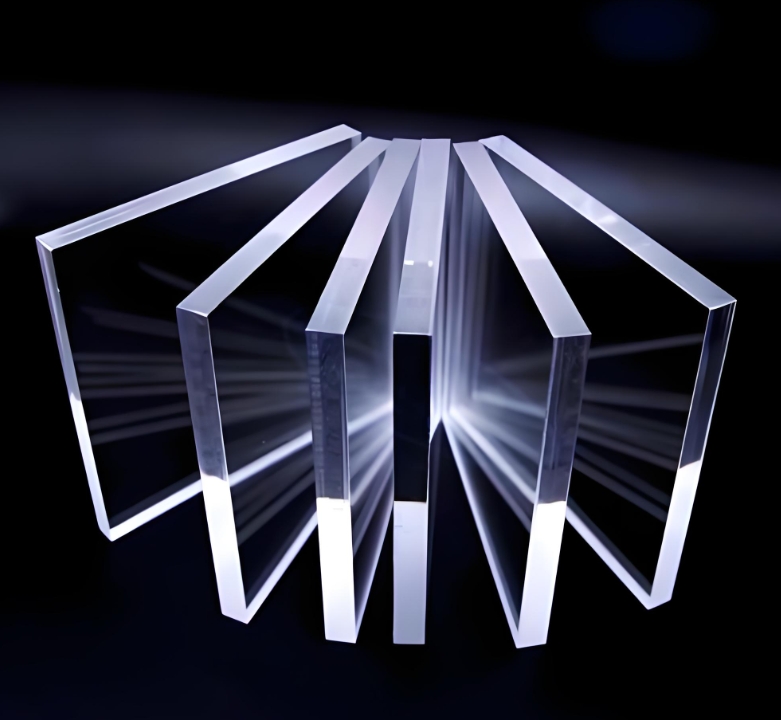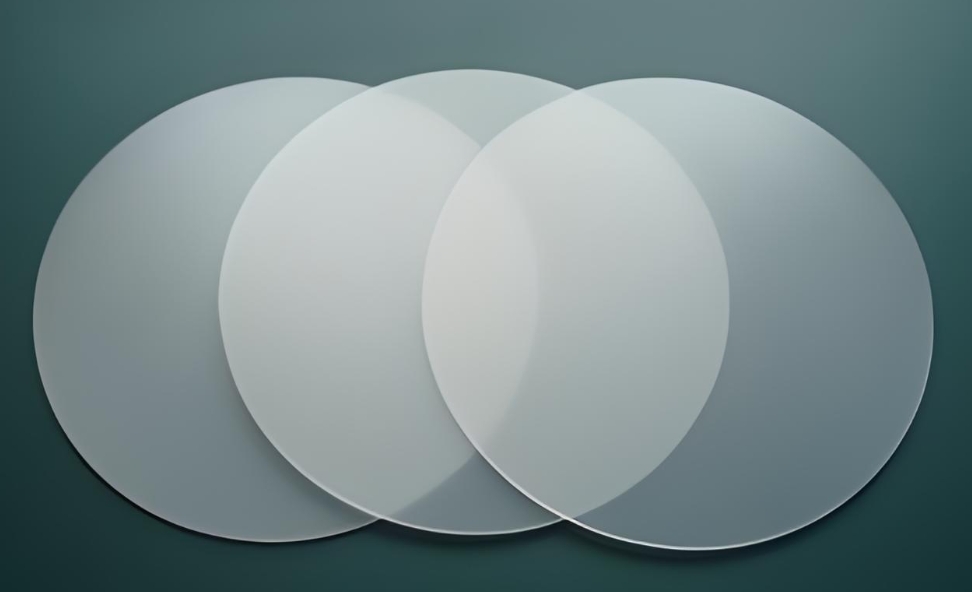In the field of optical-grade transparent products, traditional technologies such as casting, extrusion, and glass processing are increasingly being superseded by precision injection molding due to comprehensive constraints in efficiency, precision, and cost.
Core Advantages: Capable of producing ultra-thick plates (>200mm) with a light transmittance of ≥91%.
Critical Deficiencies:
Extended molding cycle of up to 48 hours with high equipment energy consumption.
Inability to directly manufacture complex structures with snaps and threads.
Secondary processing causes a 15%-25% loss in product yield.
Typical Applications: Flat advertising panels and sign substrates. Process Constraints:
Process Constraints:
Prone to flow marks when thickness exceeds 15mm.
Additional edge polishing required after cutting, increasing production costs.
Light transmittance of only 85%-88%, with a density 2.5 times that of acrylic.
Requires processing temperatures >1400°C, making micro-hole and curved surface precision designs difficult to achieve.

Through the integration of materials science and precision engineering, injection molding technology has overcome multiple limitations of traditional processes.
Mold Technology:
Mirror-polished mold cavities (Ra ≤ 0.05μm) to reduce surface haze.
Precise mold temperature control (±0.5°C) to prevent cold material marks.
Material Handling:
Raw materials pre-dried to <0.03% moisture content to eliminate bubble sources.
Addition of methyl methacrylate copolymer to enhance melt fluidity.
Application Field | Typical Structure | Precision Requirement |
Medical Devices | Microfluidic chips (0.1mm channel width) | Dimensional tolerance ±0.005mm |
Automotive Lighting | Multi-focal lenses | Curvature radius error <0.1% |
Smart Home | Transparent touch panels | Flatness ≤0.02mm/m |
Mass production: Automated injection machines achieve 600 mold cycles per day.
Mold amortization: With a 500,000-cycle lifespan, per-unit mold cost reduces to ¥0.02.
Material waste: Gate design optimized via mold flow analysis, resulting in <3% scrap rate.
Technical Breakthroughs:
Medical-grade PMMA (compliant with USP Class VI standards).
In-mold aseptic molding technology to prevent yellowing from ethylene oxide sterilization.
Case Data:
90-second injection cycle, 50 times faster than casting.
Passes -40°C to 120°C thermal cycling test without cracking/deformation.
Innovative Processes:
Two-shot molding: Inner layer with light diffuser, outer layer maintains 92% transmittance.
Nano-imprint molds: Directly form 2μm-height anti-reflective microstructures.

Parameter | Acrylic Injection Molding | Traditional Casting |
Minimum Molding Wall Thickness | 0.25mm | 3mm |
Transmittance (5mm thickness) | 92.3% | 89.5% |
Annual Cost (500,000 units) | ¥1,200,000 | ¥2,800,000 |
Recyclable Material Ratio | ≤30% (no transparency impact) | Non-recyclable |
Priority for Injection Molding:
Products with complex features (undercuts, threads).
Monthly demand >5,000 units.
Surface hardness ≥2H (pencil hardness).
Consider Traditional Processes: For ultra-thick plates (>5kg per piece).
Acrylic injection molding continues to expand application frontiers for high-transparency materials through ongoing innovation:
Material Advancement: Bio-based PMMA injection reduces carbon footprint by 40%.
Process Integration: In-mold coating replaces traditional glass coating processes.
Intelligent Control: AI vision achieves 99.9% defect detection accuracy in real-time.
Data Source Notes
Transmittance data conforms to GB/T 2410-2008 (Transparent Plastics - Determination of Transmittance and Haze).
Medical material standards referenced from ISO 10993-1:2018 (Biological Evaluation of Medical Devices).
Cost comparisons based on 2023 manufacturing sector research in China's Yangtze River Delta.
Copyright © 2023 :Worldbound Plasitc Products Co.Ltd